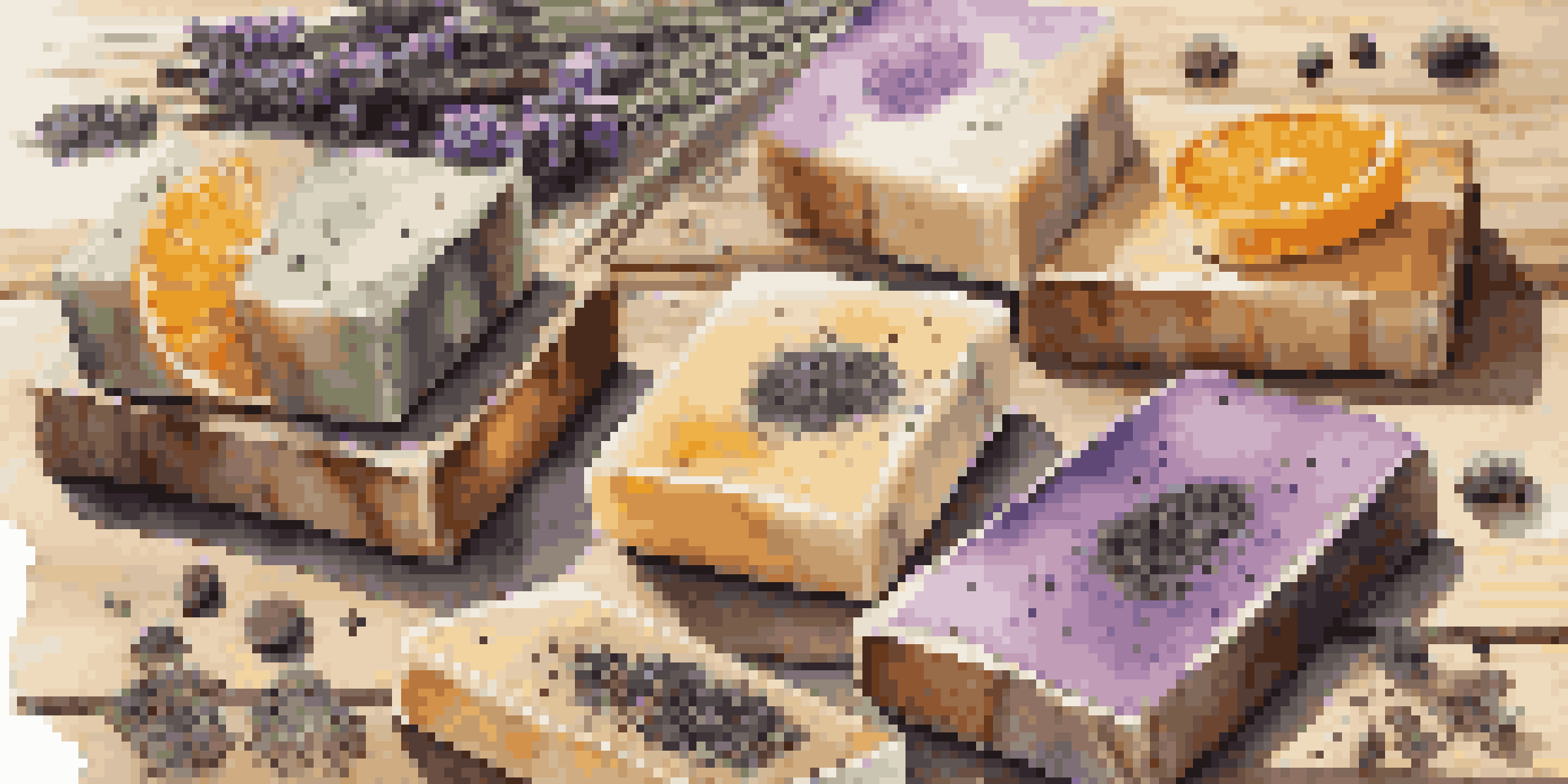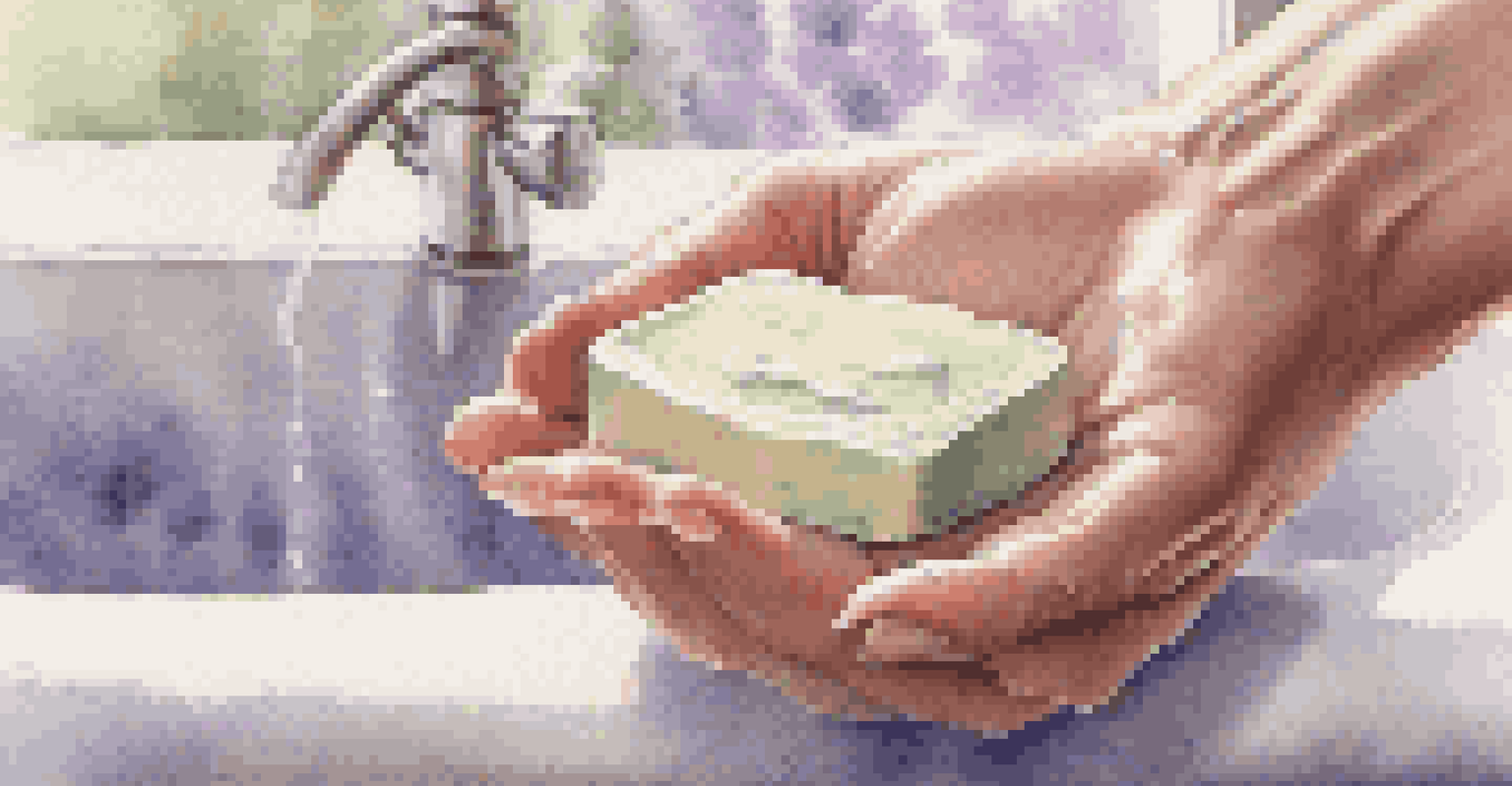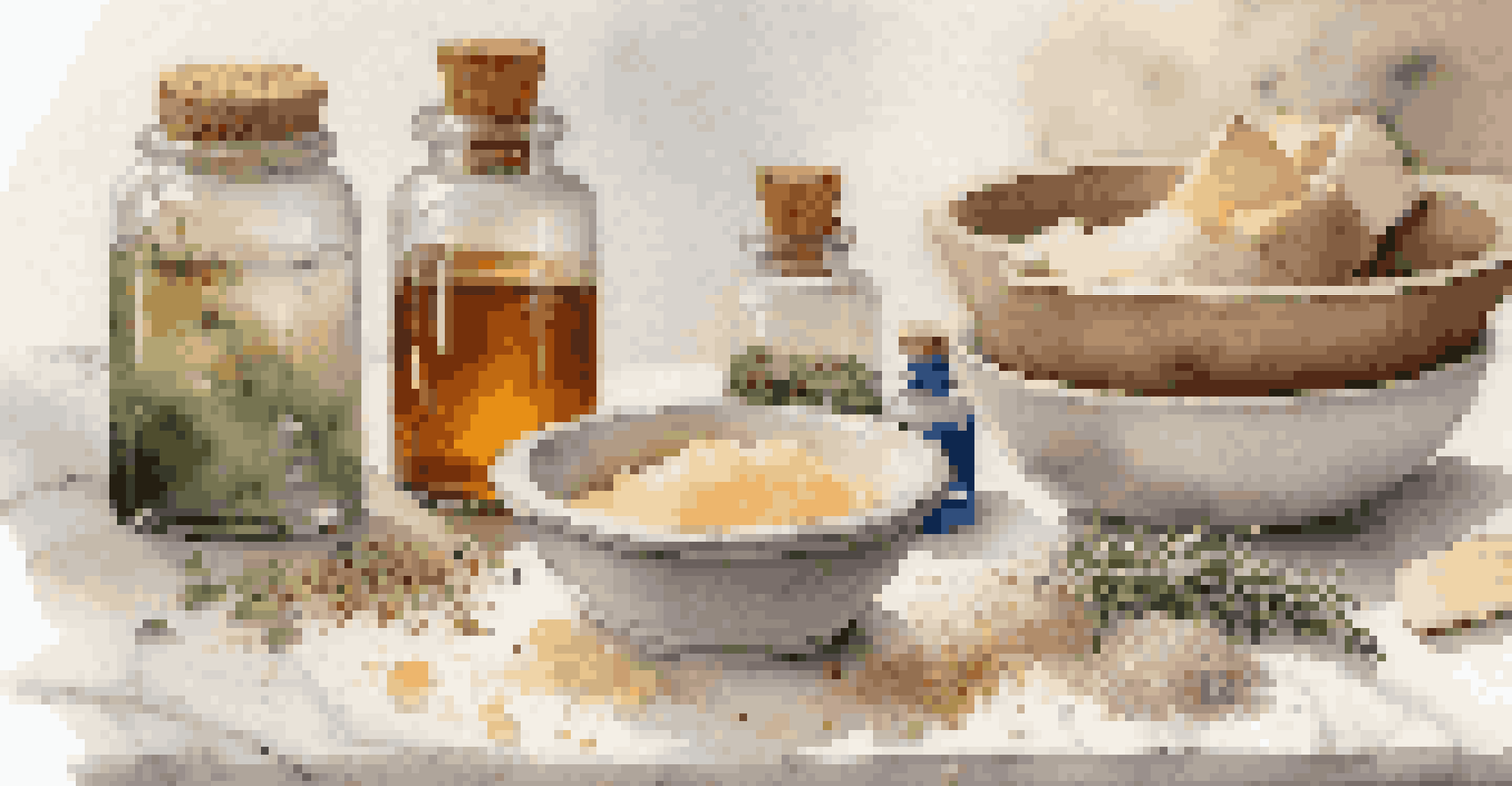Crafting Soap with Natural Exfoliants for Skin Benefits

Understanding Natural Exfoliants and Their Benefits
Natural exfoliants are substances that help remove dead skin cells, promoting a healthy and glowing complexion. These ingredients can range from sugar and salt to ground nuts and oats. By incorporating these into your soap, you're not only enhancing its texture but also providing your skin with beneficial nutrients.
Nature does not hurry, yet everything is accomplished.
Exfoliation helps prevent clogged pores, reducing the likelihood of breakouts and other skin issues. Additionally, regular use of exfoliating products can improve skin tone and texture, giving you that radiant look we all desire. So, using natural exfoliants in soap is a win-win for your skin's health.
Moreover, natural ingredients often come packed with antioxidants and vitamins, which can nourish the skin while exfoliating. For instance, ground coffee not only sloughs off dead skin but also has properties that may help reduce the appearance of cellulite. This makes crafting your own exfoliating soap both fun and beneficial.
Choosing the Right Natural Exfoliants for Your Soap
When selecting exfoliants for your soap, consider your skin type and any specific concerns you may have. For example, if you have sensitive skin, opting for finely ground oatmeal can provide a gentle exfoliation without irritation. On the other hand, if you're looking for a more vigorous scrub, sugar or salt might be the way to go.

It's also important to think about the scent and texture you want to achieve. Ingredients like coffee grounds or poppy seeds can add a pleasant aroma and a distinctive feel to your soap. Experimenting with different combinations can lead to a unique product that reflects your personal style.
Natural Exfoliants Improve Skin Health
Incorporating natural exfoliants like sugar and oats in soap helps remove dead skin cells, promoting a healthy and radiant complexion.
Don’t forget to check the source of your exfoliants! Organic and sustainably sourced materials not only benefit your skin but also support environmentally friendly practices. This thoughtful approach to ingredient selection can elevate your soap-making experience.
Essential Oils: Enhancing Your Soap's Benefits
Adding essential oils to your soap can elevate both its fragrance and its skin benefits. Oils like lavender or tea tree can offer calming properties, while citrus oils may invigorate and brighten the skin. This addition can make your homemade soap not just a cleansing product, but a luxurious experience.
The beauty of a woman is not in the clothes she wears, the figure that she carries, or the way she combs her hair. The beauty of a woman must be seen from her eyes, because that is the doorway to her heart, the place where love resides.
When using essential oils, remember that a little goes a long way. Generally, just a few drops mixed into your soap base can provide significant benefits. Plus, they can mask any natural scents from the exfoliants, creating a more pleasant aroma overall.
However, it’s crucial to choose oils that are safe for topical use and suitable for your skin type. If you have sensitive skin, you might want to avoid potent oils that could cause irritation. Always conduct a patch test before using any new essential oil in your soap.
The Soap-Making Process: A Step-by-Step Guide
Crafting your soap with natural exfoliants can be a rewarding and creative process. Start by gathering your materials, which typically include a soap base, your chosen exfoliant, essential oils, and any colorants. Melt the soap base according to the instructions, often achieved through a double boiler or microwave.
Once your soap base is melted, stir in your natural exfoliant and essential oils. This is the time to get creative! You can even add colorants or herbs to enhance the visual appeal of your soap. Pour the mixture into molds and let it set, usually for a few hours or until firm.
Choose Exfoliants for Your Skin Type
Selecting the right exfoliants based on your skin type, such as finely ground oatmeal for sensitive skin, ensures a gentle yet effective scrub.
After the soap has hardened, remove it from the molds and cut it into bars if necessary. You can also wrap them in beautiful packaging to make them perfect gifts. The entire process is not only enjoyable but also a great way to personalize your skincare routine.
Storing and Preserving Your Handmade Soap
Proper storage of your handmade soap is key to preserving its quality and effectiveness. Keep it in a cool, dry place to prevent it from melting or becoming overly soft. Avoid direct sunlight, as this can degrade the natural ingredients over time.
Using breathable packaging, such as paper or cloth, can help maintain the soap's texture while allowing it to breathe. Avoid plastic wrap, which can trap moisture and lead to spoilage. If you’ve made a large batch, consider storing some in an airtight container to keep it fresh.
Lastly, be mindful of the shelf life of your soap. While natural ingredients can offer numerous benefits, they may also have a shorter shelf life than commercial products. Generally, try to use your soap within 6 months to a year for optimal freshness and effectiveness.
Potential Skin Benefits of Exfoliating Soap
Using soap with natural exfoliants can have a host of skin benefits. Regular exfoliation helps promote skin renewal, which can lead to a smoother, brighter complexion. It also helps your other skincare products absorb better by removing the barrier of dead skin cells.
Moreover, depending on the exfoliants you choose, your soap can offer additional benefits. For instance, coffee grounds can stimulate blood circulation, while sugar can hydrate the skin. These properties not only enhance your skin's appearance but can also contribute to overall skin health.
Essential Oils Enhance Soap Benefits
Adding essential oils not only elevates the fragrance of your soap but also provides various skin benefits, making your soap-making experience luxurious.
Remember, though, that exfoliating should be done in moderation. Over-exfoliation can lead to irritation and sensitivity. Ideally, use your exfoliating soap 2-3 times a week, adjusting based on how your skin responds.
Exploring Creative Variations with Exfoliating Soap
Once you’ve mastered the basic recipe, the fun really begins! Consider experimenting with different exfoliant combinations to find your favorite blend. You can mix finely ground almonds with dried lavender for a calming effect, or use citrus peels for a refreshing scrub.
You might also explore seasonal variations, like using pumpkin spice in the fall or coconut and lime in the summer. This not only keeps your soap-making exciting but also allows you to tailor your products to your mood or the time of year.

Additionally, don’t hesitate to incorporate other elements for a unique touch. Adding honey can provide moisturizing benefits, while a sprinkle of sea salt can enhance the exfoliating power. The possibilities are endless, making your soap-making journey both creative and fulfilling.